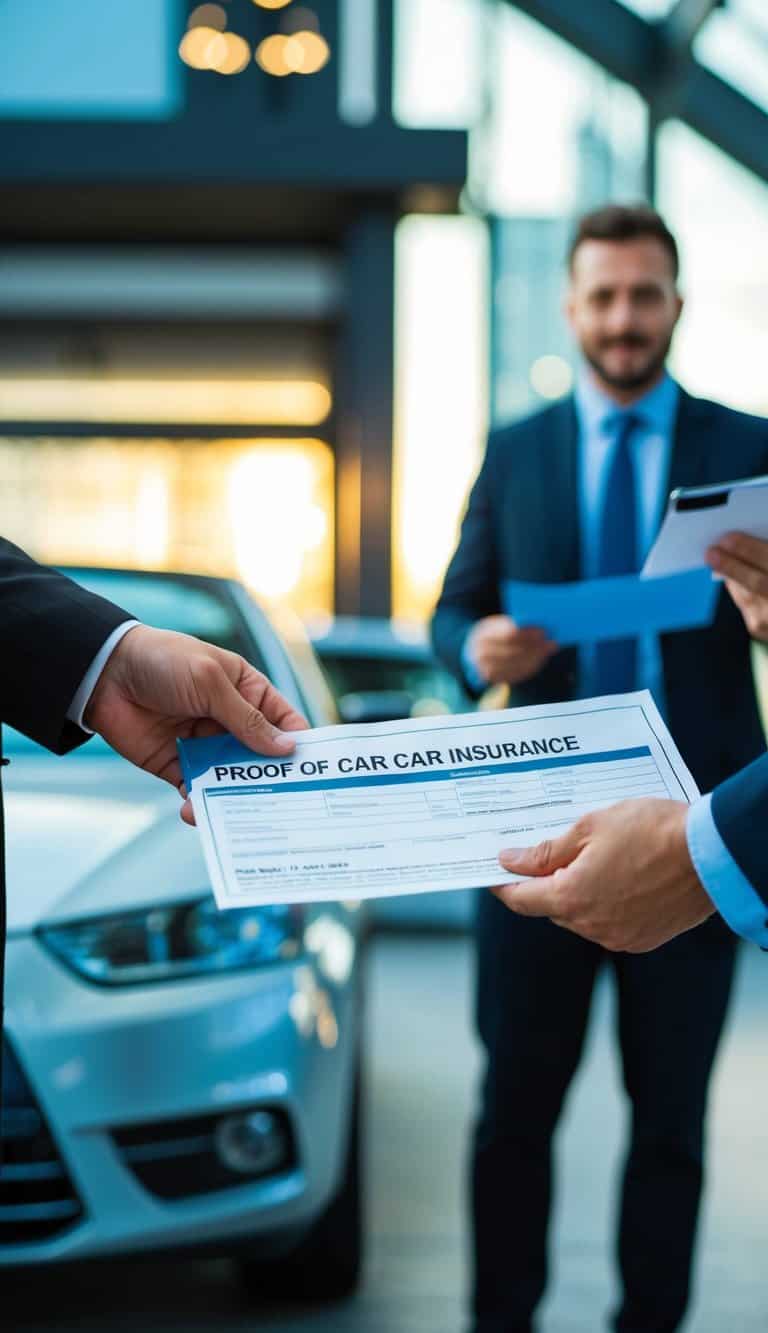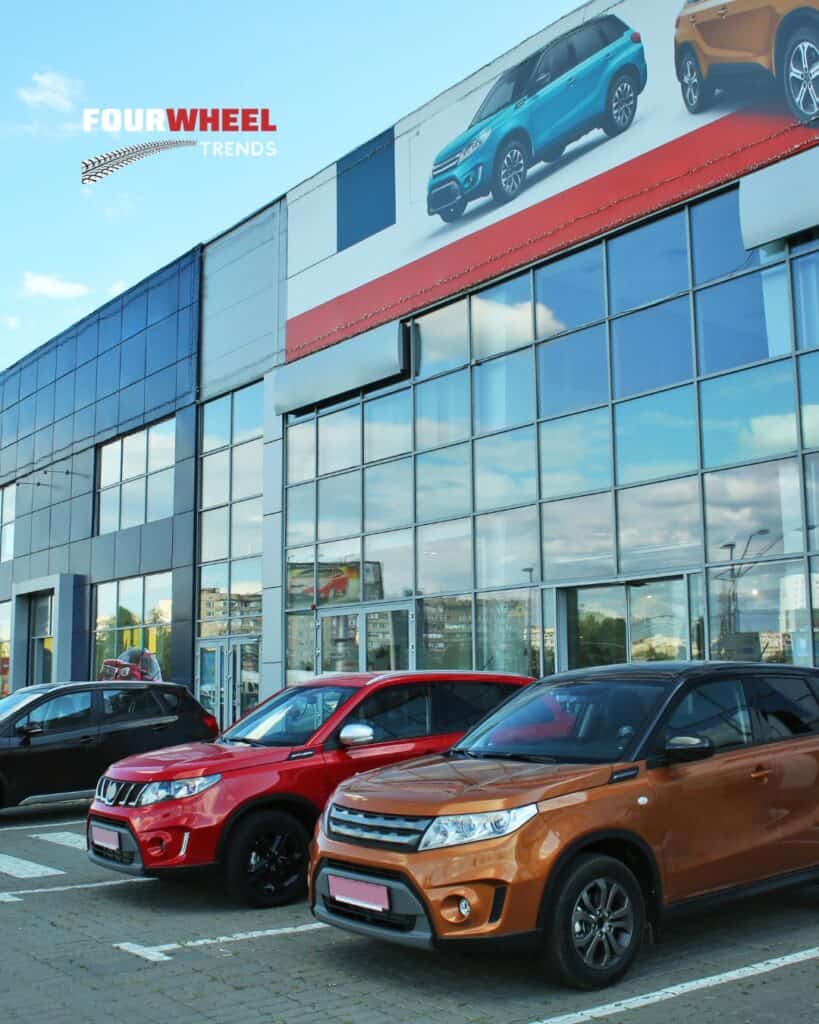What to Bring When Buying a Car: Essential Checklist for a Smooth Purchase Experience

Buying a car is exciting, but it can also be a bit overwhelming if you’re not prepared. I’ve been through this process many times over my years collecting vintage SUVs, and I’ve learned that having the right documents on hand makes everything go much smoother. When buying a car, you’ll need to bring your driver’s license, proof of insurance, proof of income, proof of residence, and if you’re trading in your current vehicle, you’ll need its title and registration as well.
Walking into a dealership prepared not only saves time but also shows that you’re a serious buyer who knows what they’re doing. I remember my first car purchase—I showed up without half the paperwork I needed and spent the whole day running back and forth. Trust me, you don’t want to be in that position when you’re trying to drive home in your new ride. A little preparation makes the entire car-buying experience much more enjoyable.
1) Valid Driver’s License
When you’re heading to the dealership to buy a car, your driver’s license is the most important document to bring. I’ve bought many vehicles over the years, and I always make sure my license is in my wallet before I leave home.
A valid driver’s license serves as your primary form of identification during the car buying process. Most dealerships won’t let you test drive a vehicle without one, which makes sense for safety and liability reasons.
Your license proves you’re legally able to drive the vehicle you’re purchasing. I remember once when a friend forgot his license and had to come back the next day to complete his purchase because the dealership wouldn’t proceed without it.
If you’re financing the vehicle, lenders will require your license as part of their verification process. They need to confirm your identity before approving any loan.
Interestingly, you might be able to buy a car without a license in some situations. I’ve seen cases where people purchase vehicles for others or for a business. In these cases, you’ll need another form of photo identification.
Make sure your license is current and not expired. I once had to rush to the DMV to renew my license before finalizing a purchase on a vintage Bronco I’d been eyeing for months!
Having your license ready also speeds up the paperwork process. Trust me, after restoring dozens of vehicles, I’ve learned that anything that makes the buying process smoother is worth doing.
2) Proof of Car Insurance

When you’re heading to the dealership to buy a new ride, don’t forget your proof of insurance! This is one of those essential items that many folks overlook in their car-buying excitement.
Most states require you to have insurance before driving your new vehicle off the lot. The dealership will typically ask to see this proof before finalizing your purchase.
What counts as valid proof? Usually, your current insurance card is enough. I’ve found that showing your insurance card or having your insurance company email or fax the proof directly to the dealer works perfectly.
The good news is that if you already have car insurance, your current policy will typically cover newly purchased vehicles for 15-30 days. This gives you a grace period to update your policy.
I always recommend calling your insurance agent before heading to the dealership. Let them know you’re planning to buy a new car and ask about their specific requirements. This simple step has saved me headaches more than once!
If you don’t have existing coverage, you’ll need to get insurance before completing your purchase. Many insurance companies now offer instant coverage through their apps or websites, making this easier than ever.
I’ve learned from experience that having your insurance information ready makes the buying process much smoother. It’s one less thing to worry about when you’re focused on that exciting new vehicle!
3) Proof of Income
When you’re heading to the dealership to buy a car, proving your income is a crucial step in the financing process. I’ve been through this many times with my vintage SUV collection, and I can tell you it’s pretty straightforward once you know what to bring.
Most dealerships will want to see some recent pay stubs – usually 2-4 of them should do the trick. These documents show the dealer that you have a steady income to make those monthly payments. I always recommend bringing your last month’s worth of pay stubs just to be safe.
If you’re self-employed like I was when I started Four Wheel Trends, you might need to bring tax returns instead. I typically brought my most recent year’s return, but some dealers might ask for the last two years.
Bank statements can also serve as proof of income if you don’t have traditional pay stubs. I’ve used these before when buying some of my project vehicles, and they worked perfectly fine.
The dealership needs this information to calculate your debt-to-income ratio. This helps them determine if you can comfortably afford the car payments. From my experience restoring older 4x4s, I’ve learned that being prepared with these documents saves a ton of time at the dealership.
Don’t worry too much about this step though! In my years covering the auto industry, I’ve found that dealers usually just need to verify your income matches what you stated on your application. It’s a standard part of the car buying process that everyone goes through.
4) Proof of Residence
When buying a car, you’ll need to show where you live. This is important because the dealership needs to verify your address for paperwork and registration purposes.
I’ve found that most dealerships accept several types of documents as proof of residence. The most common is a utility bill with your name and current address. This could be your electric, water, gas, or internet bill.
Your home’s lease agreement or mortgage document works great too. These papers clearly show where you live and are considered official documents by car dealerships.
Bank statements are another option that most dealers will accept. Just make sure it’s a recent statement with your current address printed on it.
In my years of buying vehicles, I’ve learned that pre-printed pay stubs can also work as proof of residence. They typically include your home address and are accepted by many dealerships.
I don’t recommend trying to use a USPS change of address form. From my experience, most dealerships won’t accept this as valid proof.
Make sure whatever document you bring is recent – usually from the last 30-60 days. This shows it’s your current address. Also, check that your name appears correctly on the document.
If you’ve recently moved, you might need to wait until you receive a utility bill or update your bank information. I always recommend planning ahead if you’re in this situation.
5) Vehicle Title for Trade-In
If you’re planning to trade in your current vehicle when buying a new car, you’ll absolutely need the title. This document, sometimes called a “pink slip,” is the legal proof that you own the car.
I’ve helped many friends through the trade-in process, and I can’t stress enough how important the title is. Without it, dealerships simply can’t accept your trade-in.
The title should be in your name and completely paid off. If you still have a loan, you’ll need to contact your lender first. In my experience restoring older vehicles, I’ve learned that missing titles can delay purchases by weeks.
Make sure to check that the title is signed correctly. I once brought a title to trade in my old Bronco and realized I had forgotten to sign it! The California DMV and other state DMVs require proper signatures for title transfers.
If you’ve lost your title, don’t panic. You’ll need to request a duplicate from your state’s DMV before the trade-in. I had to do this with my ’87 Jeep, and while it added about two weeks to my timeline, the process was straightforward.
Along with your title, bring your current vehicle registration and any service records you have. In my years collecting vintage SUVs, I’ve found that good maintenance records can sometimes boost your trade-in value.
Remember that out-of-state titles work too if that’s where your car is currently registered. When I moved from Colorado to California with my Land Cruiser, the dealership handled the transfer with my out-of-state paperwork just fine.
6) Current Vehicle Registration
If you’re trading in your old vehicle, you’ll need to bring your current vehicle registration documents to the dealership. I’ve helped many friends through this process, and it’s easy to forget this important paperwork in the excitement of buying a new car.
Your vehicle registration proves you’re the legal owner of your current car. Without it, the dealership might not be able to complete your trade-in. I once had to drive back home 30 miles because I forgot mine!
The registration document typically shows your name, address, vehicle identification number (VIN), and license plate information. Make sure it’s current and not expired. I’ve seen deals delayed because someone brought an outdated registration.
Sometimes your state’s Department of Revenue requires this document as part of the process when transferring ownership. In my experience restoring vintage trucks, keeping paperwork organized saves hours of headaches later.
If you’ve misplaced your registration, you might be able to get a replacement from your local DMV. I recommend doing this well before your car purchase date. Nothing’s worse than having to postpone getting your new ride because of missing paperwork.
For those buying their first car, you won’t need to bring a previous registration. But you’ll need to register your new vehicle after purchase, which requires different documentation.
When I bought my last SUV, having all my documents ready made the process smooth and quick. The salesperson even commented on how prepared I was compared to most customers!
7) Payoff Information for Trade-In
If you’re planning to trade in your current vehicle when buying a new car, you’ll need to bring some important paperwork about your loan status. I’ve helped many friends through this process, and having the right payoff information ready makes everything go much smoother.
First, you’ll need to know your payoff amount, which is the total money needed to completely pay off your car loan. This number is different from your current balance because it includes interest up to the payoff date.
I always recommend bringing a recent payoff letter or a 10-day payoff statement from your lender. This document shows exactly how much is needed to settle your loan, and dealerships require it to process your trade-in.
You’ll also need your lender’s contact information and your loan account number. In my experience restoring vintage SUVs, I’ve learned that having your lender details and remaining balance information readily available saves a ton of time at the dealership.
If your vehicle is fully paid off, you’ll just need the clean title. But if there’s still a loan, the title will show a “secured party” (your lender), and that’s why those payoff documents are essential.
I once forgot my payoff letter when trading in my old Bronco, and it delayed the whole process by days. Trust me, it’s worth gathering these important documents before heading to the dealership!
8) Recent Pay Stubs
When buying a car, I’ve learned that bringing your recent pay stubs is really important, especially if you’re planning to finance through the dealership. Most dealers will want to see proof that you have steady income before approving you for a loan.
I typically recommend bringing your two most recent pay stubs when you head to the dealership. These documents show your current employment status and income level, which helps lenders determine if you can afford the monthly payments on your new ride.
In my experience restoring and buying dozens of vehicles over the years, I’ve noticed that dealerships may require proof of your recent employment through these pay stubs. It’s just part of their verification process to make sure you’re a qualified buyer.
If you’re applying for financing at the dealership, you might need to show your most recent check or W-2, especially during the first few months of a new year. I’ve been through this process many times, and having these documents ready saves a ton of hassle.
For those using outside financing, I’ve found that you’ll still likely need to bring your two most recent pay stubs along with other documents. This is standard procedure regardless of where your loan is coming from.
Trust me, having your pay stubs ready will speed up the car buying process significantly. I always keep digital and physical copies of mine handy whenever I’m vehicle shopping, and it’s saved me countless headaches.
9) Form of Payment
When you’re ready to buy a car, having the right form of payment is crucial. I’ve bought many vehicles over the years, and being prepared with the correct payment method saves a lot of headaches.
Most dealerships accept several payment options. You can bring a cashier’s check, personal check, or even use a credit card for at least part of your purchase. In my experience, each option has different limits and requirements.
If you’ve been pre-approved for a loan through your bank or credit union, you’ll need to bring the check they provided. This is something I always recommend because it gives you more negotiating power.
For those financing through the dealership, you’ll still need a down payment. I typically suggest bringing a cashier’s check or debit card for this purpose. Some dealers limit credit card payments to smaller amounts due to processing fees.
Cash payments are becoming less common at dealerships. While I’ve used cash for private party purchases of vintage SUVs, dealerships often have policies limiting large cash transactions for security and regulatory reasons.
If you’re trading in a vehicle, remember that will count toward your payment. I’ve found having the trade-in’s title ready helps streamline the process and ensures you get proper credit toward your new purchase.
Don’t forget that the form of payment is one of the must-have items on your car buying checklist. Being prepared with the right payment method can make your car buying experience much smoother.
10) Credit Score Information

When buying a car, I always tell folks that your credit score is one of the most important things to bring – even if it’s not a physical document. Before heading to the dealership, I recommend checking your credit score so you know where you stand.
Lenders will need your Social Security number, name, address, and date of birth to pull your credit when you apply for financing. Having a solid understanding of your credit score helps you negotiate better loan terms.
I’ve bought many vehicles over the years, and I’ve learned that dealers often offer their best financing to customers with higher credit scores. If you know your score is good, you’ll have more confidence during negotiations.
Some dealerships might tell you that you don’t need to bring proof of your credit score. While that’s technically true since they’ll run their own check, I still recommend having a recent copy. This way, you can verify that what they’re seeing matches what you know.
If your credit score isn’t where you want it to be, don’t worry! I’ve been there too. Consider getting pre-approved for financing through your bank or credit union before visiting the dealership. This can sometimes get you better terms than dealer financing.
For first-time car buyers with limited credit history, bringing additional documentation of your financial responsibility can help. Things like proof of regular rent payments or utility bills might strengthen your application.
Understanding the Car Buying Process
Buying a car involves several key steps that can make the difference between driving off happy or ending up with buyer’s remorse. I’ve been through this process dozens of times, both for my collection and when helping friends and family.
Budgeting for Your Purchase
Before you start shopping, you need to know what you can afford. I always recommend looking beyond just the sticker price. Consider the total cost of ownership:
- Monthly payment: Don’t exceed 15-20% of your monthly income
- Insurance costs: Call your provider for a quote before buying
- Maintenance expenses: Some cars cost way more to maintain than others
- Fuel efficiency: This impacts your budget more than most people think
I’ve found that getting pre-approved for a loan from a bank or credit union gives you leverage at the dealership. This way, you’re shopping with “cash” and can focus on the car’s price rather than the monthly payment.
Remember to factor in taxes, registration fees, and any immediate maintenance needs. These can add thousands to your purchase price.
Researching Different Models
After restoring dozens of vehicles, I’ve learned that research is crucial. Start by identifying your needs versus wants:
- What will you use the vehicle for? (commuting, family, off-roading)
- Which features are must-haves? (safety tech, cargo space, 4WD)
- What’s your ideal fuel economy?
Use resources like manufacturer websites and independent review sites to compare options. I personally like to look at the full buying process laid out by experts.
Don’t forget to check reliability ratings and common issues for models you’re considering. My restoration work has taught me that some models have recurring problems that can be expensive fixes down the road.
Test driving is non-negotiable. I recommend driving at least 3 different models before making a decision. Pay attention to comfort, visibility, and how the vehicle handles in different conditions.
Preparing for the Dealership Visit
Going to the dealership prepared can save you time, money, and stress. I’ve bought plenty of cars over the years, and I’ve learned that having the right documents and knowledge before you arrive makes the whole process smoother.

Negotiation Tips
When I’m negotiating at a dealership, I always do my homework first. Research the fair market value of the vehicle I want and know my budget limit before stepping foot on the lot.
I recommend bringing printouts of competitor prices. This gives you leverage when discussing the price. Dealers respect customers who know what they’re talking about.
Don’t be afraid to walk away. Some of my best deals came after I politely said, “I need to think about it” and headed for the door.
Try negotiating one thing at a time. Focus on the vehicle price first, then discuss trade-ins or financing separately. This prevents the salesperson from shuffling numbers around.
Be friendly but firm. I’ve found that being respectful while standing my ground works better than being confrontational.
Financing Options Explained
When it comes to paying for your new ride, you have several options. You can bring cash, a check, or have a loan ready before entering the dealership.
Dealership financing is convenient but not always the best deal. I always check with my bank or credit union first to get pre-approved. This gives me a solid benchmark to compare against the dealer’s offer.
Cash purchases eliminate monthly payments, but they’re not always the smartest move. Sometimes taking a low-interest loan and keeping your cash invested makes more financial sense.
Leasing works well if you like driving a new car every few years and don’t mind the mileage restrictions. I’ve leased trucks when I knew I’d want something different in a few years.
Remember to bring proof of income if you’re financing. Pay stubs or tax returns are usually sufficient.
Frequently Asked Questions
Getting ready to buy a car involves gathering the right documents and information. I’ve helped many first-time and experienced car buyers prepare for their purchase, and these questions cover what you’ll need in different buying situations.
What essential documents should I have when purchasing a car from a dealership?
When heading to a dealership, I always recommend bringing your driver’s license as it’s required for test drives and finalizing paperwork. You’ll also need proof of insurance that meets your state’s minimum requirements.
Bring recent pay stubs or proof of income to verify you can afford the vehicle. Don’t forget proof of residence like a utility bill or bank statement showing your current address.
If you’re trading in your current vehicle, bring the vehicle title and registration to complete that part of the transaction.
As a first-time car buyer, what are the crucial items to bring along to make the transaction smooth?
As someone who’s guided many first-time buyers, I recommend bringing a valid ID and proof of insurance as absolute essentials. Many first-timers don’t realize they need insurance before driving off the lot.
Bring documentation of your credit score and history if you’re financing. This helps you know your position before the dealer runs your credit.
I also suggest bringing a trusted friend or family member with car-buying experience. They can help ask important questions about the vehicle that you might not think of.
Could you tell me what I need to have with me when buying a vehicle through a private sale?
From my experience with private purchases, always bring your driver’s license and a secure form of payment. Most private sellers prefer cash, cashier’s checks, or electronic transfers.
I recommend bringing a bill of sale form (available online or at your DMV) to document the transaction details. Both parties should keep a signed copy.
You’ll need to verify the seller has the title in their name and that it’s free of liens. I always suggest meeting at your bank or the DMV to complete the transaction for added security.
When planning to pay for a car in cash, what are the specific considerations or paperwork I should prepare?
I’ve bought several vehicles with cash, and I always call the dealership ahead of time to understand their cash payment policies. Some dealerships have limits on physical cash transactions.
Bring a cashier’s check as an alternative to carrying large amounts of cash. You’ll still need your driver’s license and proof of insurance to complete the purchase.
Be prepared to fill out IRS Form 8300 for cash transactions over $10,000. This is a legal requirement that helps prevent money laundering.
What is necessary to bring to the dealership when arranging financing for a car purchase?
When financing, I always emphasize bringing proof of income such as recent pay stubs, W-2 forms, or tax returns. Lenders want to verify your ability to make monthly payments.
You’ll need your driver’s license and proof of insurance. I also recommend bringing proof of residence like utility bills or a lease agreement.
If you have a pre-approval from your bank or credit union, bring that documentation to compare with the dealer’s financing options. This gives you leverage to ask questions about loan terms.
When acquiring a new vehicle, what types of paperwork and evidence should I expect to provide?
Based on my experience buying numerous vehicles, expect to provide your driver’s license and proof of insurance at the very minimum. These are non-negotiable requirements.
The dealership will likely request proof of income and residence to verify your identity and financial situation. This helps protect both you and the dealer from fraud.
If you’re eligible for special programs like college graduate or military discounts, bring supporting documentation. I’ve seen these discounts save buyers thousands of dollars when properly verified.
